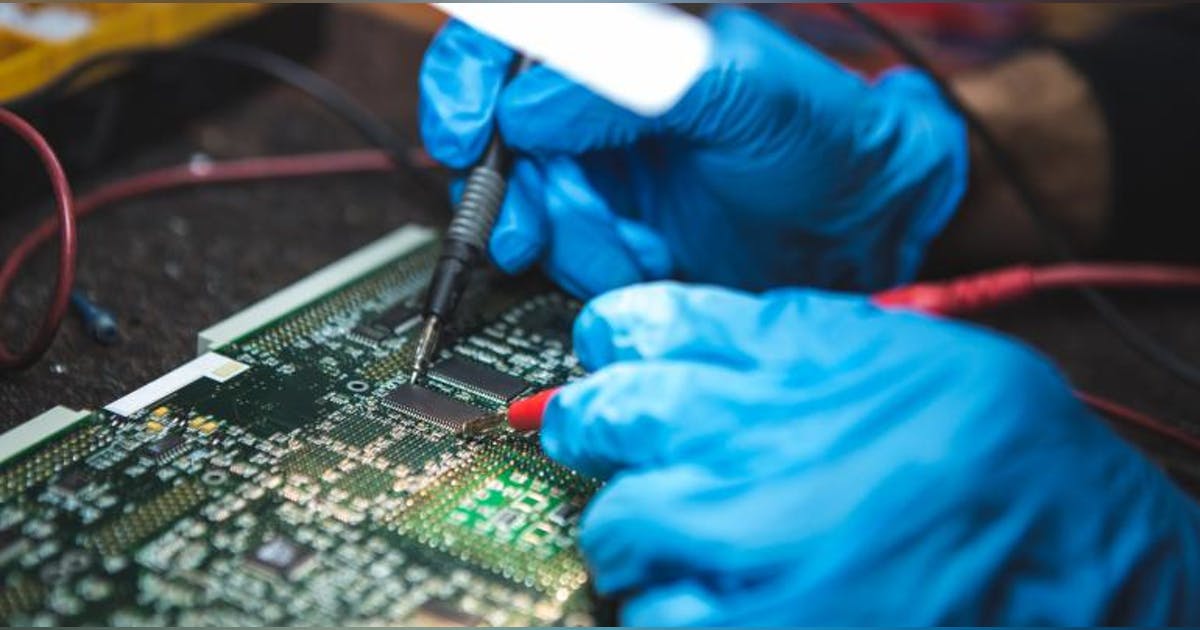Understanding Software Defined Radios: The Future of Communication with Software-Defined Radio Technology
Understanding Software Defined Radios
Software Defined Radios represent a significant innovation in radio technologies, transforming the way communication is conducted. Through software-defined architectures, these radios enable users to modify and control their functionalities via software rather than relying solely on hardware components. This flexibility leads to enhanced performance across various applications, from military communications to portable radios used in civilian settings. Software-defined radios (SDRs) can adapt to changing signals, making them ideal for dynamic environments. With the capability to operate multiple frequencies and protocols, sdr radios enhance the efficiency of two-way radios, offering a cost-effective and resource-optimized solution for modern communication needs.
| Feature | Description | Benefits |
|---|---|---|
| Flexibility | Allows modification of radio functions through software updates | Easy adaptation to new communication standards |
| Multi-frequency Support | Can operate on various frequencies without hardware changes | Increases operational range and versatility |
| Dynamic Signal Processing | Adapts to new signals in real-time | Improves communication reliability in fluctuating conditions |
| Cost Efficiency | Reduces the need for multiple hardware devices | Lower overall setup and maintenance costs |
Definition of Software Defined Radio
Software Defined Radios (SDRs) represent a significant advancement in radio technology, where traditional hardware components are replaced by software algorithms. Unlike conventional car radios that rely on fixed-frequency circuits, an SDR utilizes a universal software radio peripheral to process radio signals digitally. This flexibility allows for adjustments in frequency and modulation through software updates rather than hardware changes. As a result, SDRs enhance radio communication systems by accommodating a wide range of frequencies and protocols.
The backbone of software-defined radio (SDR) systems lies in their ability to leverage software technologies for improved performance in radio communications. Cognitive radios, a type of SDR, intelligently manage spectrum allocation and adapt to varying signal conditions, optimizing radio transmitters for efficient operation. By employing digital radio techniques, SDRs can facilitate advanced radio communication, making them essential in both military and civilian applications. Their versatility positions Software Defined Radios as a transformative element in modern communication infrastructures.
Key Components of Software Defined Radios
Software Defined Radios (SDRs) are built on a diverse range of key components that integrate hardware and software systems to facilitate radio signal processing. These components include a radio modem for transmitting and receiving signals, a robust software applications environment, and a flexible software communications architecture. Tools like GNU Radio enable radio engineering professionals to create custom algorithms and signal processing techniques, allowing radios to adapt to different frequency bands and protocols with ease.
The ability to control and modify SDRs through software enhances their versatility and functionality. Applications such as internet radio and packet radio utilize these software components to enable efficient communication and data transmission. By leveraging powerful software control, SDRs can analyze and reinterpret radio signals dynamically, thus meeting various communication needs across both military and civilian sectors. This integration of hardware and software components is what sets Software Defined Radios apart in modern communication systems.
The Software Defined Radio Concept
Software Defined Radios represent a significant leap in the evolution of communication technology, transforming traditional radio transceivers into versatile devices capable of efficient operation across various frequencies and protocols. By utilizing a software-defined approach, these radios can adapt to changing needs in software communication architecture, allowing for seamless updates and enhancements. Features such as the ability to decode radioteletype and operate as both a scanner radio and an FM radio illustrate their multifunctionality. With applications ranging from joint tactical radio systems used in military operations to configurations favored by radio amateurs, Software Defined Radios are redefining the capabilities of modern communications systems. Their integrated radio receiver technology empowers users to manage diverse radio signals, paving the way for innovative uses across numerous sectors.
Evolution of Software Defined Radio Technology
The development of Software Defined Radios (SDRs) can be traced back to early software radios that sought to replace traditional hardware with more flexible software solutions. As radio technology advanced, the introduction of the joint tactical radio system revolutionized military communications. This system utilized wideband software radios capable of handling multiple frequency bands and protocols. Over time, the term software radio evolved, encompassing a broader range of applications, from military to commercial uses. The transition from early software radios to sophisticated software-defined radio systems marked a significant milestone in how transmissions are processed and managed.
Real software radios emerged with enhanced capabilities, reflecting the ongoing evolution of software-defined radio hardware. These advancements allow for greater adaptability and efficiency in communication systems. Software-defined radio refers to a technology that enables dynamic reconfiguration and the ability to support various standards without the need for substantial hardware changes. The integration of software radio technology has enabled the development of multi-functional devices that cater to diverse operational needs across different sectors. As a result, Software Defined Radios have become indispensable in modern communication, providing a foundation for future innovations.
How Software Defined Radios Work
Software Defined Radios utilize a flexible software radio architecture that allows for significant adaptability compared to traditional hardware-based radios. This approach enables the implementation of various functionalities through software modifications rather than hardware changes. Such radios can easily switch between different communication protocols without the need for new equipment. The all-purpose radios that emerge from this design philosophy adapt seamlessly to diverse operational environments and bandwidth requirements.
The concept of an ideal software radio revolves around the ability to execute multiple radio functions with a single hardware platform. Smart radios enhance this capability by intelligently selecting the optimal frequency and modulation scheme based on real-time conditions. Several software radio designs prioritize ease of integration and scaling, making it simple for users to upgrade or modify systems as technologies evolve. This flexibility is key to the advantages offered by Software Defined Radios in both commercial and military applications.
| Feature | Software Defined Radios (SDR) | Traditional Radios |
|---|---|---|
| Flexibility | High – Can be updated or modified through software | Low – Requires hardware changes for upgrades |
| Adaptability | Can switch between multiple protocols seamlessly | Limited to predefined protocols |
| Integration | Easy to integrate with new technologies | More complex and often requires new equipment |
| Use Cases | Commercial, military, emergency services, etc. | Primarily fixed communication applications |
Advantages of Software Defined Radios
Software Defined Radios offer remarkable flexibility and upgradability compared to traditional radios. By utilizing a software-based radio transceiver, these systems can easily adapt to changing technology and user requirements without needing specific radio hardware upgrades. The universal software radio approach allows for the integration of various functionalities into a single platform, making it easier for military software radio applications to maintain operational readiness. On the civilian side, public software radio solutions can cater to diverse communication needs, while amateur radio software provides hobbyists with customizable options. This adaptability leads to enhanced resource optimization, allowing users to maximize the capabilities of basic radio hardware while benefiting from a versatile software radio receiver that can support multiple communication protocols.
Flexibility and Upgradability
The design of Software Defined Radios allows for significant flexibility in configuring radio systems to meet diverse communication needs. Unlike conventional radio systems, which rely heavily on fixed hardware components, a digital modular radio can adapt to various standards and protocols through software updates. This capability is particularly beneficial for military radios, which require rapid adjustments to respond to evolving operational requirements. Programmable radio technology enables users to modify settings and functionalities without the need to replace physical radio hardware.
Upgradability is a key advantage offered by Software Defined Radios, allowing for timely enhancements in radio communication systems. As new technologies or standards emerge, users can update their systems effectively, avoiding the cost and downtime associated with replacing older, hardware-based systems. For instance, soundcard radios and frs two-way radios can be easily upgraded with software patches to improve performance or integrate new features. This adaptability ensures that users of Software Defined Radios can stay aligned with current software radio regulations and emerging trends in the radio communication landscape.
Cost-Effectiveness and Resource Optimization
Software Defined Radios offer significant cost savings compared to traditional radio hardware platforms. By utilizing a common radio platform, organizations can reduce the need for multiple, specialized radio devices. This adaptability allows for a single hardware unit to support various radio configurations and different radio protocols. As a result, the expenditure on equipment, maintenance, and training is reduced, creating a more efficient resource allocation for radio communications functionality.
The ability to swiftly upgrade and modify the functionality of naval radios makes Software Defined Radios particularly appealing. Organizations can adapt the radio platform to meet evolving operational requirements without investing in new hardware. This flexibility leads to optimized resource usage and minimizes downtime associated with outdated technology. With the integration of various radio protocols, an adaptable radio can seamlessly switch between functions while maintaining cost-effectiveness in operational deployments.
- Improved lifespan of hardware through software upgrades rather than replacements
- Lower training costs due to simplified interfaces and common operational procedures
- Enhanced interoperability with existing systems, reducing integration costs
- Decreased logistical demands by minimizing the variety of equipment needed
- Streamlined maintenance processes, saving time and reducing service interruptions
- Ability to respond quickly to technological advances without major financial outlays
- Support for multi-mission capabilities, maximizing the utility of a single radio platform
Applications of Software Defined Radios
Software Defined Radios encompass a transformative approach to radio technology, allowing for the creation of a resulting radio platform that can adapt to various communication needs. These versatile systems enable the integration of smart radio functionality into diverse radio types, replacing traditional single-purpose radio systems. Military radio systems benefit significantly from Software Defined Radios, as they can quickly reconfigure to meet evolving tactical requirements. With capabilities to manage multiple radio devices, these intelligent radios facilitate enhanced communication across complex environments. Radio equipment manufacturers leverage software-defined instruments to push the boundaries of radio design, addressing many radio communication needs. Emerging radio technology topics highlight the efficiency and effectiveness of Software Defined Radios in both military and civilian applications.

Military and Defense Uses
Software Defined Radios (SDRs) play a crucial role in military and defense applications, offering advanced capabilities that traditional radio systems cannot match. The use of reconfigurable radio equipment allows for rapid adaptation to various communication needs. Tactical radio systems that utilize SDRs can process radio data with greater efficiency, enabling real-time adjustments to core radio functionalities. Radio engineers leverage tools like GNU Radio and USRP™ radios to develop almost-all-digital radio designs, enhancing the interoperability and effectiveness of military communications.
The flexibility of SDRs is particularly beneficial for amateur radio applications, where radio terminals can be modified and upgraded easily in response to changing operational requirements. By integrating hardware and software components, military organizations can deploy robust software-defined hardware, ensuring that radio systems remain operational across diverse environments. This capability not only enhances communication security but also optimizes resource utilization in defense scenarios, ultimately leading to improved mission outcomes.
Commercial and Civilian Applications
Software Defined Radios have found significant application in both commercial and civilian sectors, enhancing communication capabilities dramatically. JTRS radios exemplify the advanced tactical radio systems used in military settings, but their adaptability also enables them to serve civilian needs. For instance, airspy radios facilitate efficient radio monitoring, ensuring seamless radio compatibility across various communication platforms. Digital baseband radios can manage several radio conversations simultaneously, providing a superior radio experience for users.
The versatility of Software Defined Radios lies in their ability to adapt through algorithms that configure radio functionalities. This feature allows for effective implementation of adaptive radio systems that can be adjusted according to specific requirements. Software-defined transmitters can deliver tailored radio solutions for numerous applications, from emergency response teams to commercial broadcasting networks. By leveraging these technologies, organizations can enhance their communication infrastructures and improve overall operational efficiency.
Challenges and Limitations of Software Defined Radios
The implementation of Software Defined Radios (SDRs) faces several technical challenges that need to be addressed. Sophisticated radio control mechanisms are essential for optimal performance, yet developing these systems can be complex. Cognitive radio technology offers potential solutions, but integrating such advancements into existing infrastructure poses difficulties for radio service providers. The versatility of SDRs, including their use in unmanned system radios and compact radios, often requires diverse software and configurations to support custom radio functions. This multifaceted nature can complicate projects, particularly in amateur radio initiatives where users may need to adapt a simple radio modem to meet specific requirements. Overcoming these hurdles is vital for the effective deployment of SDRs, ensuring they fulfill cognitive radio applications in today’s dynamic communication landscape.
Technical Challenges in Implementation
Implementing Software Defined Radios (SDRs) presents several technical challenges that need careful consideration. Many radio functions must be managed through advanced software tools, especially for systems such as zynq® radios which require a robust digital modulator radio setup. The complexity of integrating modern software with existing hardware can be daunting, particularly as radio enthusiasts aim to customize their setups. The need for flexible software approaches and the ability to work on software-specific tasks adds layers of complexity for developers.
Dismounted radios used in military applications, such as air force radios, require precise configuration and optimization. Transitioning from a different analog radio system to a software-based solution often involves significant software-related work, which can increase development time and costs. Ensuring interoperability between legacy systems and SDRs demands meticulous planning and testing. Each implementation may face unique challenges, from signal processing issues to ensuring compliance with regulatory standards.
- Understanding the compatibility of software with various hardware components
- Managing the complexity of signal processing algorithms
- Ensuring reliable data transmission in diverse environmental conditions
- Addressing power consumption and efficiency challenges
- Developing user interfaces that cater to both advanced users and novices
- Implementing robust security measures to protect against cyber threats
- Testing and validating the system in real-world operational scenarios
Regulatory and Standardization Issues
The implementation of Software Defined Radios (SDRs) faces various regulatory and standardization hurdles, particularly in the realm of terrestrial radio communications. Military radio manufacturers often deal with stringent requirements that dictate software infrastructure and compliance with existing regulations. For commercial radio users, the lack of unified standards complicates the integration of software-defined receivers into existing systems, creating uncertainty in radio today.
Complex software analyses are necessary to navigate the landscape of regulatory compliance and technical specifications. The need for standardization becomes crucial as software projects evolve to ensure compatibility across different platforms and devices. Ground force radios used in military applications require adherence to specific protocols, while commercial radio technologies must balance innovation with regulatory constraints. Software baseband analysis plays a vital role in meeting these requirements while optimizing performance in both military and civilian contexts.
Future Trends in Software Defined Radios
Emerging trends in Software Defined Radios (SDRs) are revolutionizing the landscape of electronic systems today, particularly in mission-critical radio monitoring. The shift towards adaptive radio technologies allows for greater flexibility in dynamic environments. Current radio procurements increasingly favor software implementations that enhance performance and reduce costs. As SDRs evolve, the concept of a software receiver refers to systems that can be updated seamlessly within a software environment, optimizing capabilities for radio users. Enhanced functionalities are anticipated for VLF radio communications, making SDRs even more versatile. Resources like sdr-radio.com serve as valuable platforms for developers and enthusiasts exploring the latest software implementations and operational efficiencies within the SDR domain.

Conclusion
The evolution of Software Defined Radios has significantly transformed the radio domain, allowing for greater flexibility and adaptability in transmissions across various frequencies. Users can now leverage new software and resources to enhance their systems, making modular communications systems more efficient than ever. With the rise of software resources and typical amateur software, individuals can experiment with different applications and configurations, effectively tailoring their setups to specific needs or interests. As radio today guides new users through the complexities of modern technology, the implications of Software Defined Radios continue to broaden, paving the way for innovative solutions in both military and civilian spheres.
FAQS
What are the key advantages of using software-defined radios in amateur radio projects compared to traditional radio systems?
The advantages of using software-defined radios (SDRs) in amateur radio projects include their ability to utilize a flexible radio software architecture that allows for the reconfigurable radio equipment and different software algorithms to configure radio functionality. Unlike traditional hardware radios, a software-defined radio system integrates both hardware and software components, enabling users to easily adapt to particular radio frequencies and support various radio-specific applications through a single radio device. This makes SDRs a popular choice among enthusiasts who want to experiment with different radios while optimizing their radio signal quality and performance.
Can you explain the software-defined radio concept and how it differs from traditional radio systems?
The software-defined radio (SDR) is a versatile technology that allows for the manipulation of radio signals through software rather than relying heavily on particular radio hardware. This software radio idea enables reconfigurable radio equipment to adapt to different communication standards and protocols. Unlike traditional systems that may be constrained by particular radio architecture, a software-defined system can utilize algorithms to configure radio functions dynamically, allowing it to operate across a range of particular radio frequencies. The integration of hardware/software capabilities makes SDRs an attractive choice for applications in radio/ew (electronic warfare) and other fields.
How do algorithms configure radio signals in software defined radios, and what role do reconfigurable radio equipments play in this process?
Algorithms configure radio signals in software defined radios (SDR) by allowing the software specific adjustments necessary to modify radio transmission and reception parameters. This capability is made possible by reconfigurable radio equipments, which can adapt to different operational requirements and support various applications across particular radio frequency bands.
How can a software radio terminal enhance the performance of software defined radios in managing radio-signal processing?
A software radio terminal can significantly enhance the performance of software defined radios (SDR) by providing advanced capabilities for radio-signal processing. With its powerful processing ability, the software radio terminal allows for efficient manipulation and management of various radio signals, enabling more flexible and responsive communications in an SDR setup.
How do software defined radios (SDR) provide flexibility in radio communications compared to fixed hardware systems?
Software defined radio (SDR) technology offers significant flexibility in radio communications by allowing users to modify and upgrade the software that controls the radio functions. This adaptability is in stark contrast to fixed hardware systems, which limit users to predefined configurations and capabilities. With SDR, various algorithms can be implemented to support different frequencies and modulation techniques, thus enabling users to respond to changing communication needs more efficiently.





Comments are closed.